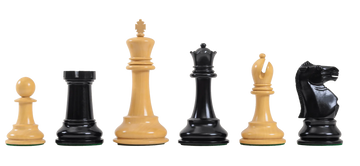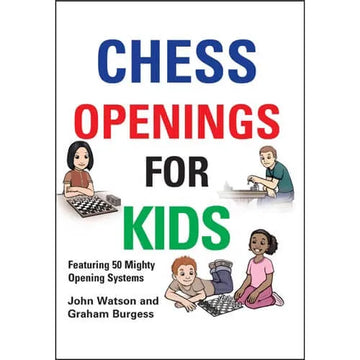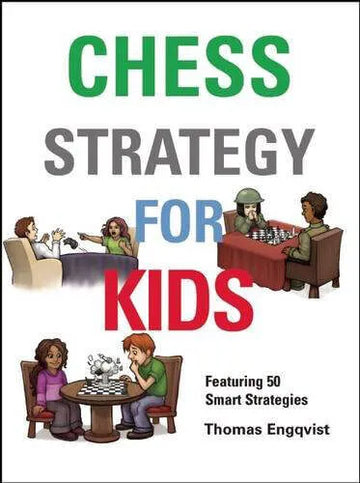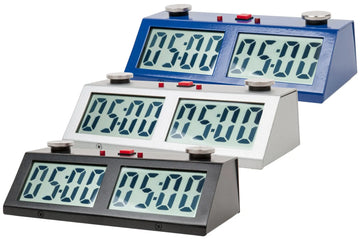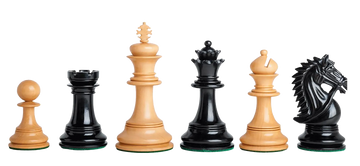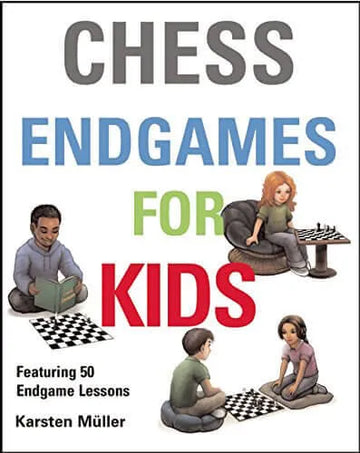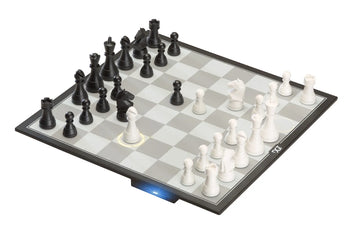How to Prepare Your Kid for a Chess Tournament
Signing up for a chess tournament is an exciting step in a young player’s journey. Before you head to the tournament hall, it pays to spend some time ensuring your child is prepared. We’ve put together the most essential information (and a few things to watch out for!) to help your kid’s tournament go well.

Tournament Basics
Three Most Common Tournament Styles
Understanding how the tournament will be structured is an important part of preparation. Common tournament formats include Swiss, Round-robin, and Knockout.
- Swiss: A Swiss system tournament has a predetermined number of rounds where players meet different opponents. Pairings will match players with similar running scores. Consistent wins will advance a player in the standings and make their pairings more challenging. The Swiss system is often used for large tournaments where it’s not practical to have a round-robin format.
- Round-robin: In a round-robin, all players will compete with all players. In a tournament with 12 players in a section, each player will have 11 games. This format will give you the “fairest” result, in that every player has played an equally challenging tournament.
- Knockout: Elimination formats are “knockout” chess, where a loss means the end of your tournament. An unlucky pairing or blunder can cause very good players to be knocked out early. Elimination formats are more often used in speed chess or when seeding can be done to ensure the first-round pairings are evenly matched.
It’s important for your young player to know what to expect next after a win or a loss. Elimination tournaments may have a consolation bracket where losing players compete for a middle-of-the-pack ranking, or their day may be over. The round-robin format means games may vary significantly in difficulty throughout the day. Swiss tournaments may have longer breaks for the tournament director to determine pairings.
Your child may have bye rounds as well, where they aren’t playing. Perfect time for a nap, a walk, or a meal! They may also want to hit the Skittles room or any on-site vendors.
Time Control and Chess Clocks
Every tournament will have a time control standard that all games will follow. If they’ve asked your child to bring their own clock, make sure it can be set to the specified time standard. Practice the time control ahead of the tournament. A player who loves blitz will find a long game with 10 second delay excruciatingly slow if they aren’t prepared. They may also disadvantage themselves by moving too quickly!
Blitz and rapid games are driven by the clock. If your chess kid enjoys the faster pace of these styles, make sure they’re practicing with their clock at home. It should be a reflex to move the piece, then hit the clock button every time.
It’s important that your chess kid is familiar with time controls and chess clocks prior to tournament day. If you don’t already have a chess clock, one durable option with flexible time settings is the ZMart Fun II Digital Chess Clock.

Chess Rules
It’s important that young players are knowledgeable about chess rules as well as any special rules for the tournament.
One rule that’s often a problem for young players is the “touch-move” rule. The US Chess Federation’s Official Rules of Chess (7th Ed) states:
“…a player on move who deliberately touches one or more pieces, in a manner that may reasonably be interpreted as the beginning of a move, must move or capture the first piece touched that can be moved or captured.” (ORoC, pg 21)
Adjustments must be announced prior to making them. Scholastic tournaments invariably have disputes about players touching pieces. Make sure your chess kid knows how to apply the rule to their own play and when it applies to their opponent—and when it doesn’t. An accidental brush of a piece or righting a knocked-over pawn doesn’t violate the touch-move rule.
There may be additional rules specific to that tournament, like a 50-move limit. Read any communications from the tournament director carefully and be sure your player understands special rules.
US Chess publishes the standard rules in the US Chess Federation’s Official Rules of Chess (7th Ed). It’s a good idea to have a copy in your chess library, available here. The most frequently utilized chapters (1,2,11) are available as a free download.
Chess Notation
Tournament directors expect your child to be able to document their game using a score sheet and chess notation. Most tournament chess sets will have the rank and file designations on the board, but your child should be able to point them out on an unmarked board. Chess clubs regularly use score sheets to familiarize their students with both proper notation and the habit of noting moves during a game.
One benefit of becoming comfortable with chess notation is the ability to follow and study games of more advanced players—a great way to learn! As Jeanne Cairns Sinquefield says in her free resource, Learn to Read & Write Chess, learning chess notation is becoming “literate” in the language of chess.
USCF Membership Requirements
If the tournament is an official rated event, make sure your child has a US Chess membership before signing up. Becoming a member is easy with online registration at US Chess. Shortly after signing up, your child will get a US Chess Member ID number. Make a note of that number! It’s information you’ll need to sign your player up for rated tournaments.
For Younger Kids: Independent Play and Chess Etiquette
Tournaments do not allow parents to be near their children during play. Tournament Halls are usually off-limits entirely. For smaller kids, this can be challenging. Make sure your chess kid is ready to handle being on their own, following the rules, and potentially talking to an arbiter if there are questions about play. They may need to advocate for themselves in a rules dispute.
Be aware of your child’s maturity level. It’s not uncommon for big feelings to hit in the tournament hall. It’s normal to see some tears when things don’t go well. That said, kids should be able to win or lose with an age-appropriate level of self-control. A “good game” and a handshake after a game are expected. Small kids may benefit from role-playing this at home! Good chess etiquette should be part of every game you play with them.
After the Tournament
Win or lose, take time to celebrate the accomplishment of playing in a tournament! If your child is taking home an award or improving their rating, emphasize the hard work they put in to get that result. If they had a disappointing outing, you should point out how brave it was to try! Sometimes we blunder, sometimes we have unlucky pairings where our strategy doesn’t work. Kids learn resiliency from tough days when we treat them as growth experiences rather than failure.
Plan a fun activity to burn off residual nerves. Brain science tells us that when we bundle challenging experiences with something we enjoy, that good feeling extends to the entire activity. If you’ve traveled to a tournament, find a local attraction or outdoor space to explore. It doesn’t have to be a big production or expensive. Parks with playground equipment, a nature trail, or downtime with a favorite show are all good options.

Don’t immediately jump into a post-mortem of blunders. It’s important to have a cooling off period so that your chess kid can come to the analysis with some objectivity. Kids can take the discussion of errors as criticism and internalize it as “failure.” To avoid painting the whole experience as a “failure,” let them tell you what they did right, what they learned, something new, or let them wait to talk about it until they’re ready.
Other Practical Considerations
Chess tournaments are like every other sporting and academic competition—your kids will benefit from being well-rested and eating properly. Make sure they sleep the night before and have a solid breakfast with some protein. Bring snacks and water to the venue, along with something to do between games. Some kids love the Skittles room for informal games, but others need a quiet space with a book.
If you’re traveling, it’s ideal to have some time to settle in before the tournament starts. Bring a pillow or other familiar stuffed buddy from home to help with sleep in an unfamiliar place. Be sure you’ve got a plan for how to get to the tournament venue with time for check-in.
Conclusion
No one can predict the outcome of a tournament beforehand. You can feel confident that your chess kid is ready to do their best, however! With some thoughtful preparation and a good night’s sleep, you’ll give them a great start for what we hope is a successful day. In no time at all, you’ll be the seasoned tournament pros giving advice to the new folks. Good luck!

